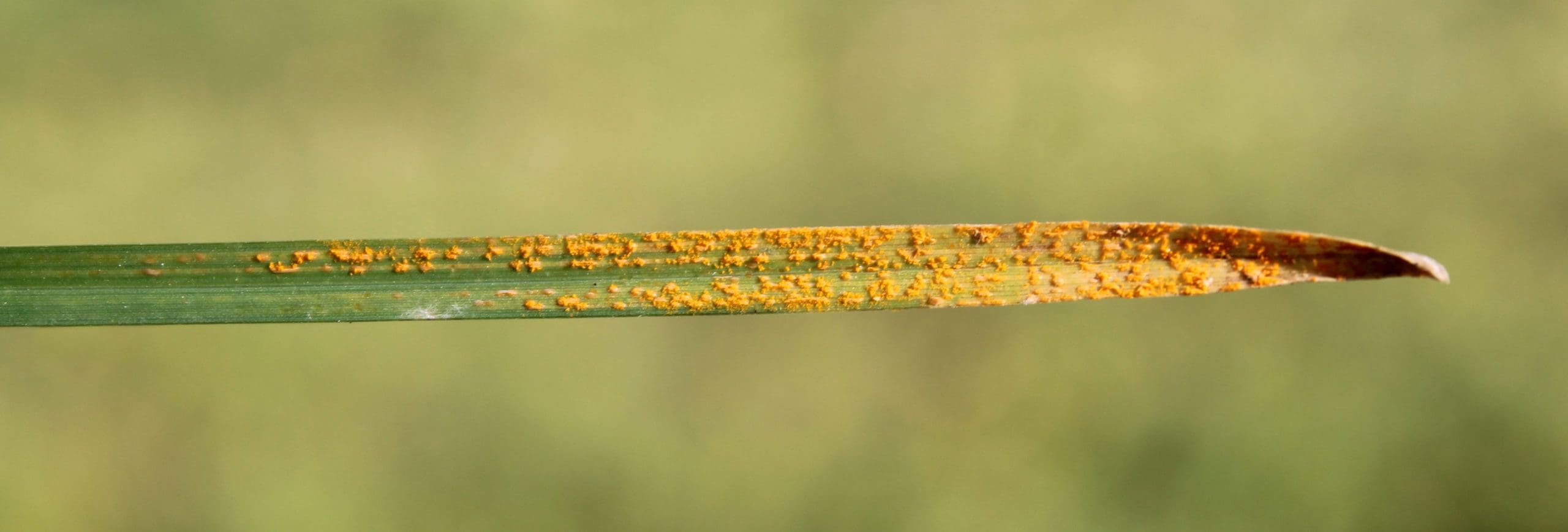
Lawn diseases are unsightly and unwanted in any customer’s yard. They can also be a challenge to identify properly as drought and pest-damaged lawns can look like diseased turf. Fungal pathogens are the culprit behind lawn diseases and for a lawn disease to truly take hold the right conditions, a vulnerable grass plant, and a pathogen must be present for it to spread. Below are some of the most common lawn diseases you can expect to see, how to identify them and how to culturally control them.
Rust (Puccinia ssp.)
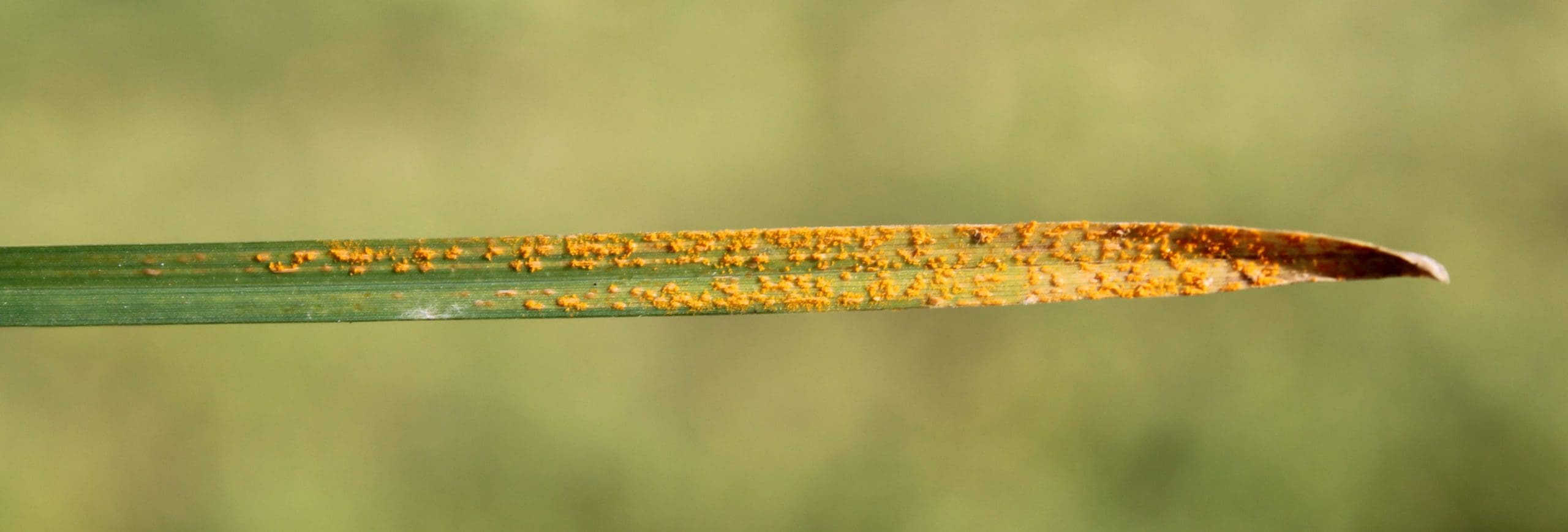
Identify: Kentucky bluegrass, ryegrass, and zoysiagrass are the most susceptible to rust. However, any stressed grass can be overtaken by rust. Yards with rust will have:
- Small yellow spots that appear on leaf blades and sheaths.
- Spots develop into pustules that release yellow, orange or brown spores.
- Area takes on a rust-color appearance.
Conditions to Thrive: Appears in hot, dry weather and prefers moist, low-light areas. Severe infections occur in slow-growing turf with low nitrogen levels or plant water stress.
Control Methods: Apply adequate levels of nitrogen. Minimize the amount of time moisture is on the leaf surface. Mow higher and more frequently as the grass outgrows the rust.
Pythium Blight (Pythium spp.)
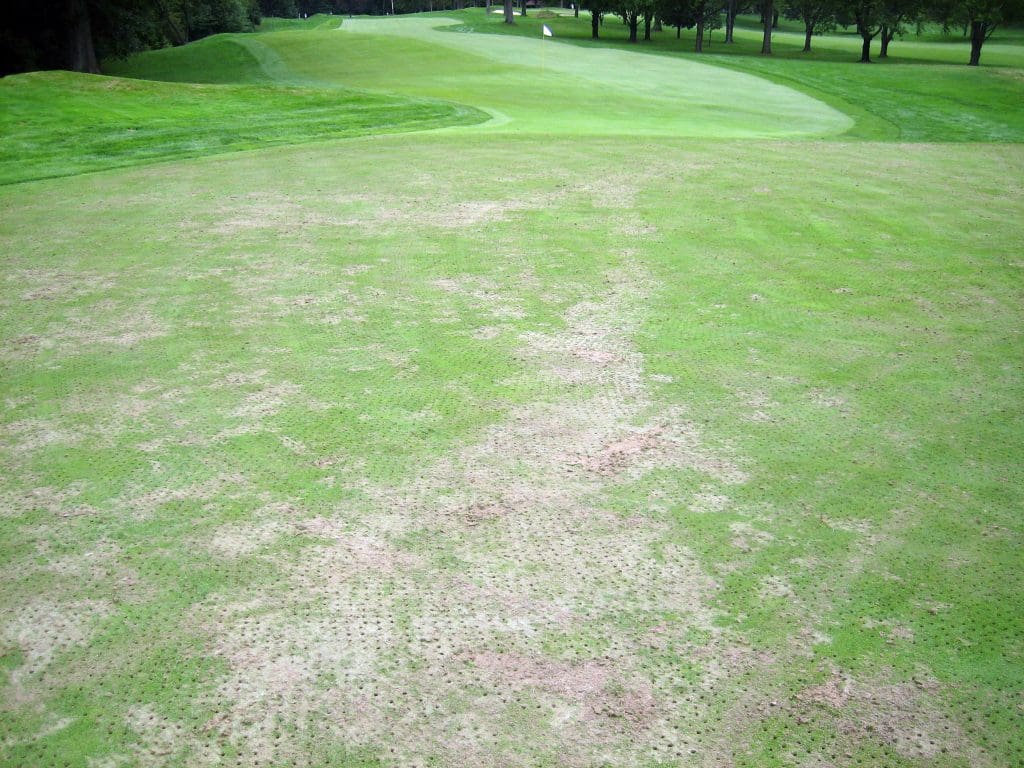
Photo: John Kaminski
Identify: Also known as grease spot, Pythium blight affects bentgrass, ryegrass, tall fescue and annual bluegrass the most. Lawns with Pythium blight have:
- Areas that look water soaked or slimy.
- Areas turn light to reddish brown and die.
- White, cottony fungus can be seen on the blades in the early morning.
Conditions to Thrive: Pythium blight is most prevalent in hot, humid weather. It is easily spread by lawn equipment or water drainage patterns. Lawns with a high soil pH are particularly susceptible.
Control Methods: Correct drainage problems that allow for standing water. Aerate to reduce soil compaction. Minimize shade and improve airflow. Do not mow or irrigate when Pythium blight is present to prevent the spread of the pathogen.
Dollar Spot (Sclerotinia homoeocarpa)
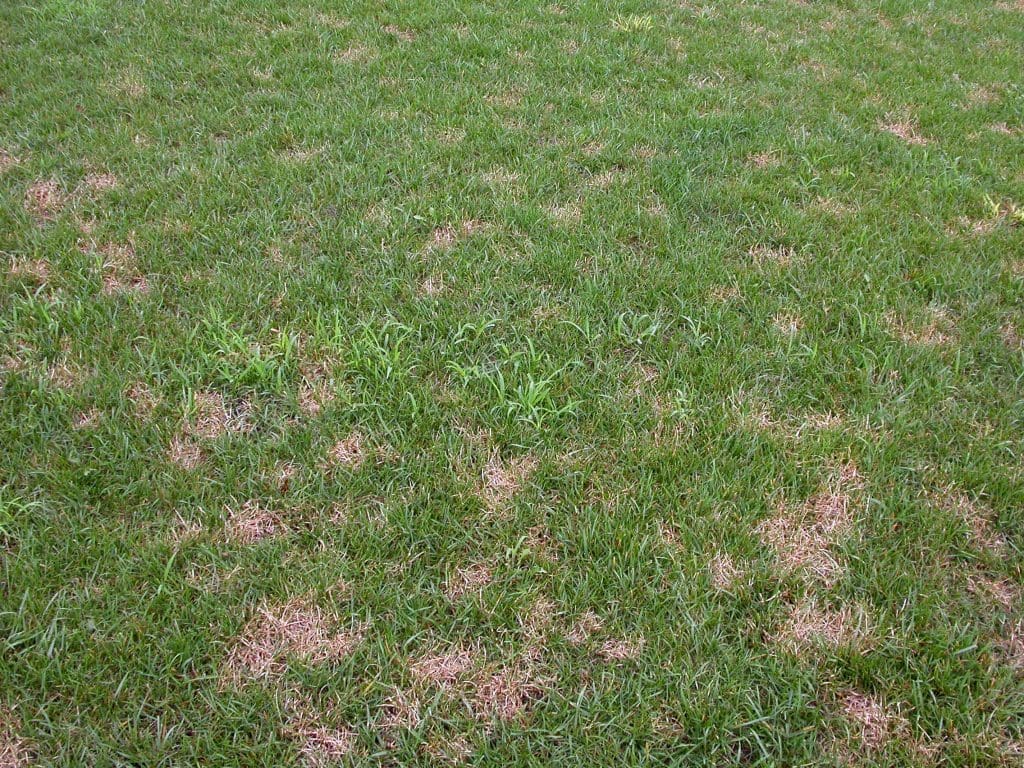
Photo: John Kaminski
Identify: This disease can affect all species of warm- and cool-season grasses. Kentucky bluegrass, tall fescues, bentgrass, perennial ryegrass, zoyziagrass, Bermuda grass and centipede grass are particularly susceptible. Lawns with dollar spot have:
- 1 to 5 inch in diameter dead spots with straw-colored grass. These dead spots may grow together to form larger patches.
- Hourglass-shaped blotches appear on the blades.
- Cottony threads of the fungus can be seen on the plant in the morning.
Conditions to Thrive: Dollar spot typically shows up in late spring and early summer. Lawns with low nitrogen are the most susceptible. Heavy thatch and wet grass also support this disease’s development.
Control Methods: Aerate the lawn to reduce thatch and fertilize appropriately to get the nitrogen levels up. Irrigate deeply to prevent drought stress.
Brown Patch (Rhizoctonia spp.)
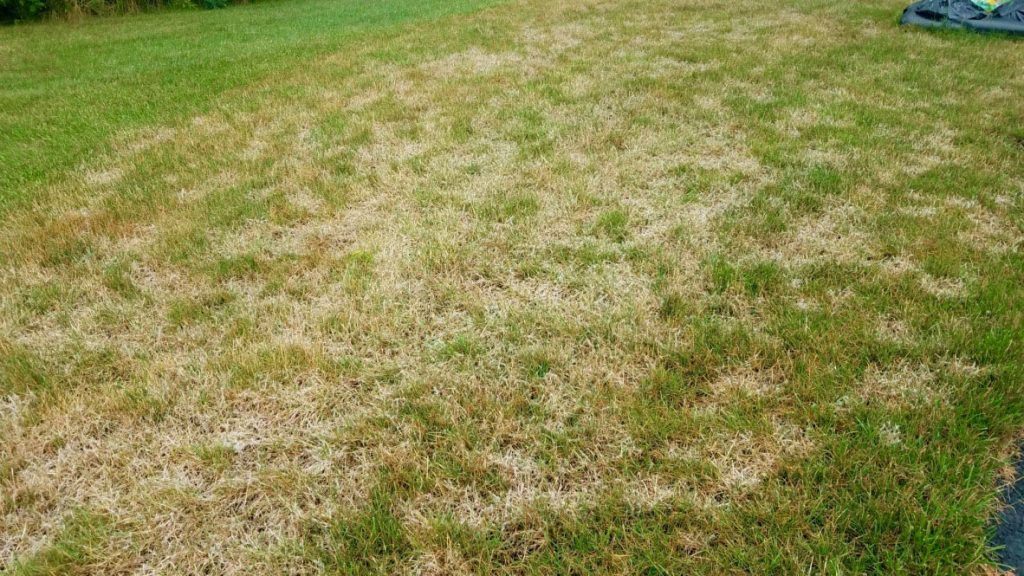
Identify: Another disease that can infect almost any type of turfgrass, it is most common in tall fescue, St. Augustine grass, perennial ryegrass and centipede grass. Yards with brown patch have:
- Circular brown patches that can be a few inches to several feet in diameter.
- A smoke ring can appear on the outer edges, often appearing water-soaked.
- The grass in the center of the patch can begin growing again giving it a pupil-appearance.
Conditions to Thrive: Brown patch most often shows up during hot, humid summer weather. It prefers night temperatures of 65 degrees F or higher at night. This disease favors excess soil moisture, extended leaf wetness and high nitrogen levels.
Control Methods: Brown patch is best controlled by proper irrigation, don’t overwater. Also, avoid heavy applications of nitrogen fertilizer during disease-favorable weather. Increase mowing height and air circulation to dry the turf faster.
Red Thread (Laetisaria fuciformis)

Photo: Kris Lord
Identify: Fine fescue and perennial ryegrass are the most susceptible to red thread, but it can also affect Kentucky bluegrass, bentgrass and Bermuda grass. Red thread can be misdiagnosed as pink patch due to similar symptoms. Yards with red thread have:
- Tan, pink or red circular or irregular patches from 4 inches to 2 feet in diameter.
- Leaf blade dead at the tip turning tan, light-gray or bleached white color.
- Thick, red tendrils that protrude from affected leaf blades.
Conditions to Thrive: Red thread thrives in cool, moist weather. It appears frequently in nutrient-poor soils.
Control Methods: Maintain adequate fertilization, especially nitrogen and potassium. Water deep and infrequently.
This article was published in the May/June issue of the magazine. To read more stories from The Landscape Professional magazine, click here to subscribe to the digital edition.

